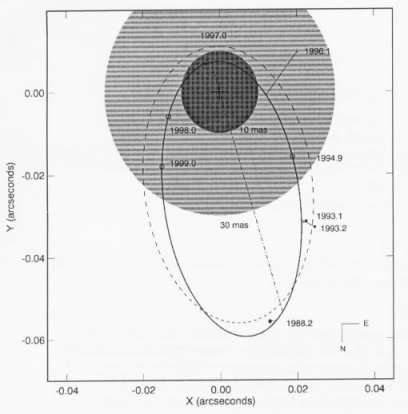
 |
The brilliant, very young O dwarf 15 = S Monocerotis consists of two stars in a tight 26-year, quite eccentric, orbit. The axes are in seconds of arc. North is to the bottom, as is traditional. The filled and open circles are actual observations and predicted positions. The dashed curve is an older calculated orbit, while the solid one is a revised orbit. The large gray circles do NOT represent the primary star, but are resolution limits (the degree to which the system can be seen in detail) for the instruments that made the observations. On this scale, the stars would be mere dots. (From an article by D. R. Gies et al. in the Astrophysical Journal, vol. 475, p. L49, 1997.) |